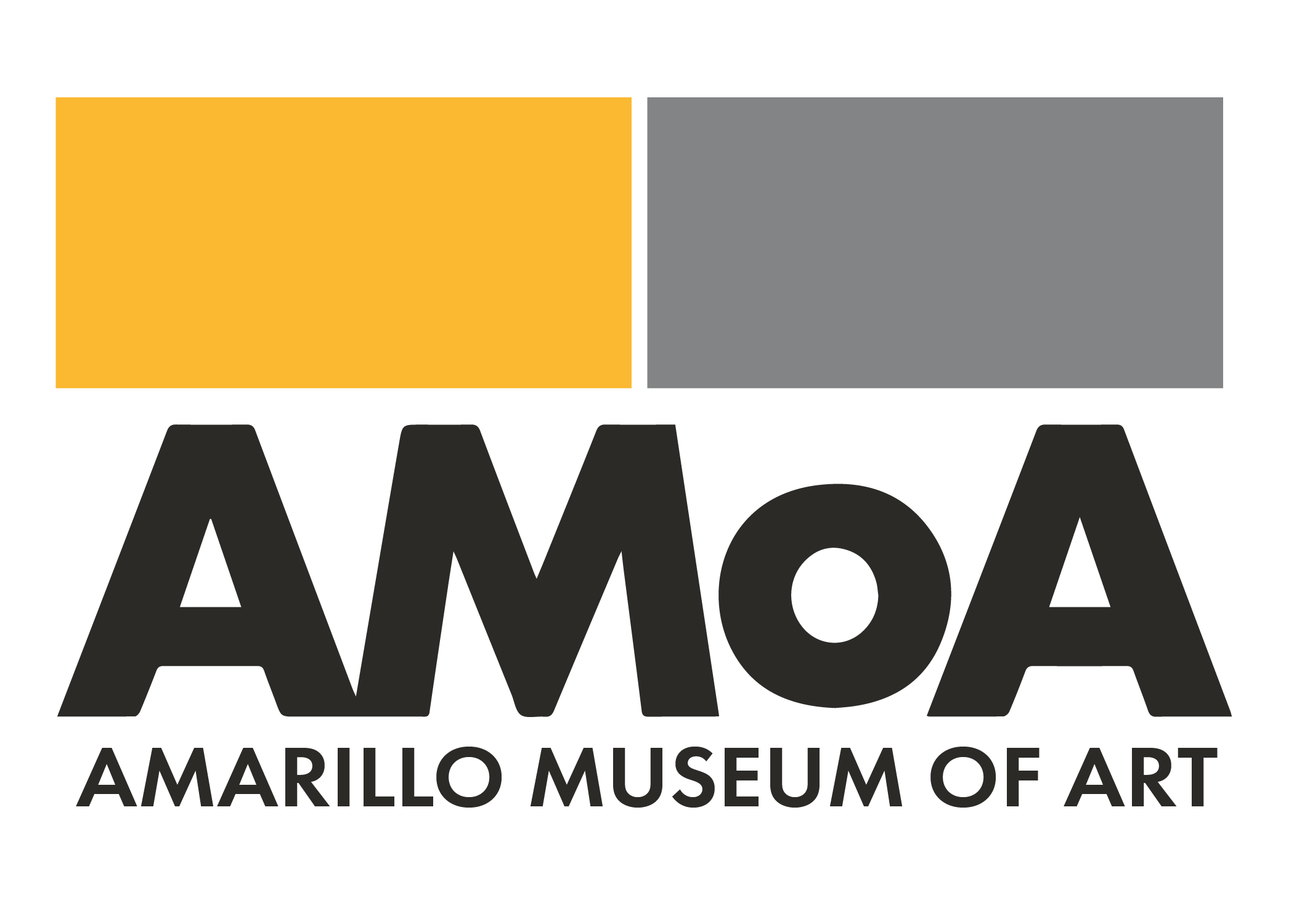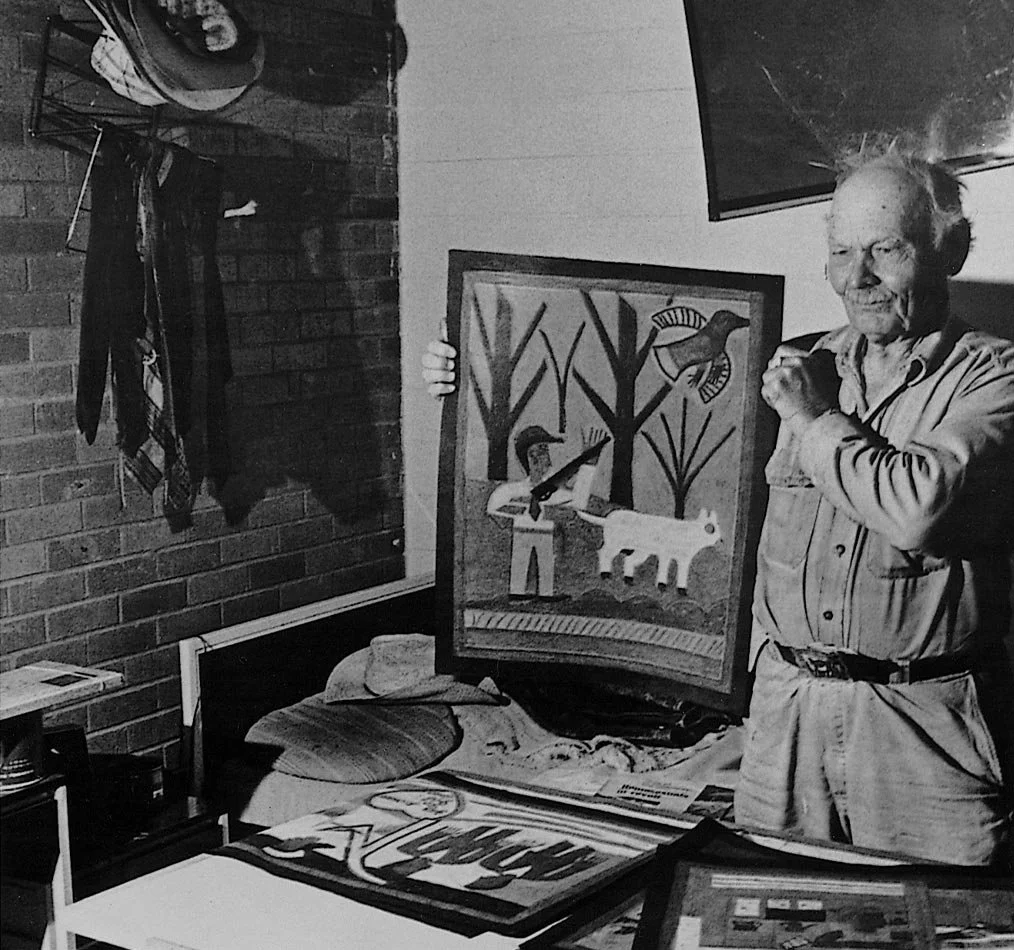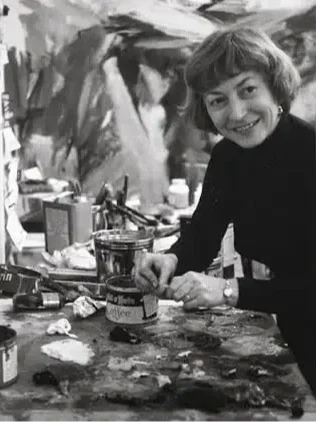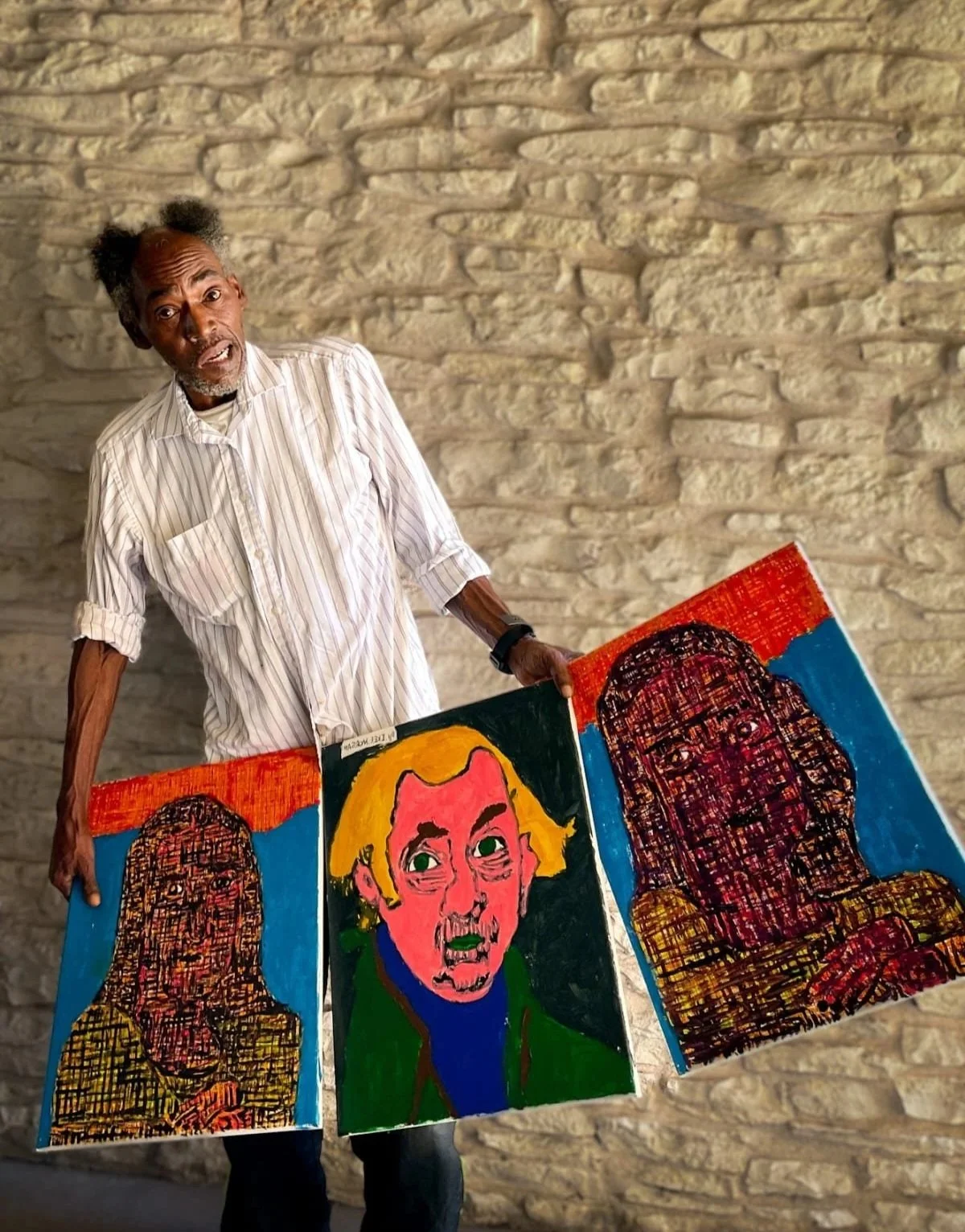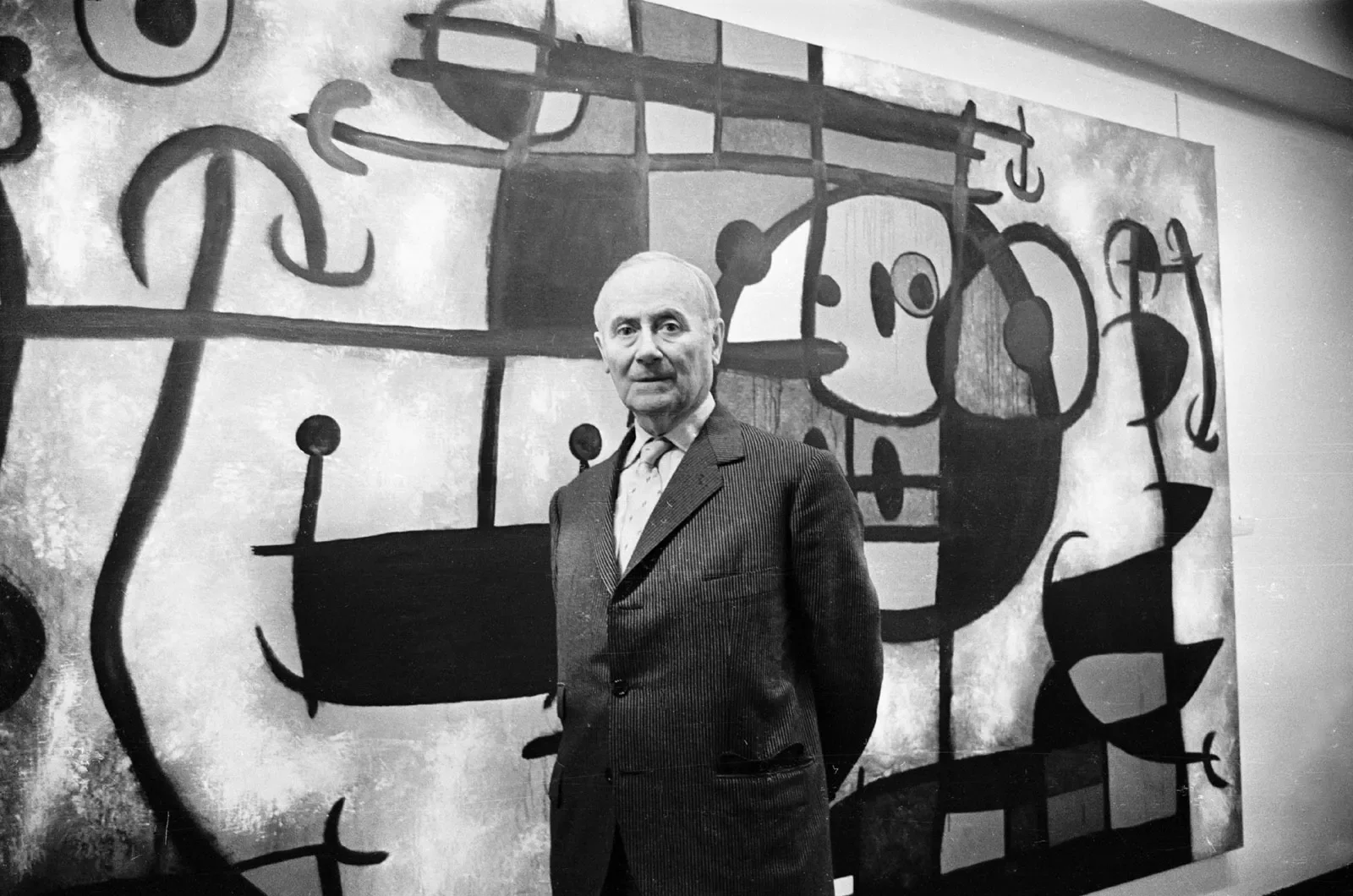On View Now
This group of artworks from AMoA’s permanent collection are examples of how artists utilize the act of play to discover new territories in their artistic expression. For many artists, creating their art is a playful and freeing process that encourages uninhibited exploration of materials and content. Being playful in the creative process may also involve a set of rules or a structured game that provides a framework for themes within controlled yet varied outcomes. Take time to study each artwork and the playful themes these artists employ within their creative practices. Be inspired to create your own playful artworks to take home.
Eddie Arning
Eddie Arning, was a Texas self-taught artist who began making art later in life while living in a state hospital. He used crayons and pastels to create colorful, graphic images inspired by everyday life and magazine pictures. His playful use of shape and color continues to inspire creativity today.
Elaine de Kooning
Elaine de Kooning painted multiple series of sports-themed works throughout her career, particularly focusing on basketball and baseball players. Her gestural, expressive style, rooted in Abstract Expressionism, captures the movement and energy of athletes. De Kooning used loose brushstrokes to convey the figures in action. She once said, "A painting to me is primarily a verb, not a noun" She was inspired by life and photos. De Kooning drew both games and photographs. In the 1950’s she traveled with the New York Yankees and the Baltimore Orioles to sketch the teams.
Ike Morgan
Ike Morgan has painted thousands of portraits of presidents. His playful approach to portraiture is characterized by the use of exciting color combinations, textures and loose brush strokes. The artist has utilized the motif of presidential portraits to explore and experiment; finding his own unique language of portraiture.
Joan Miro
Miro’s paintings, prints and sculptures emphasized line, color and form. Lyrical Line is a phrase often used to describe Miro’s organic style of painting. He spontaneously allowed lines to drift and move around the canvas, creating quickly improvised compositions to respond to with bright colors.
John Himmelfarb
Try Himmelfarb’s method for creating abstract works. Make a drawing with colored pencils that starts with small gestures of any type. You could begin with lines, dots, circles, or any kind of doodle that comes naturally.
Russell Adams
Russell Adams created assemblages made from humble materials like found wood, markers and paint. They are playfully whimsical abstractions that combine organic and geometric shapes. Russell’s direct approach to creativity reminds us that art can be made without expensive materials or technical processes.
